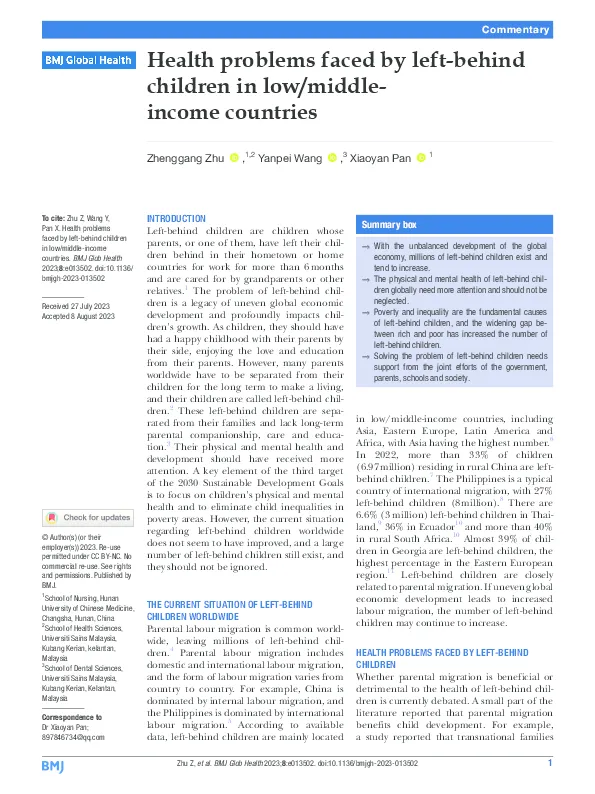
Study: Research
Health problems faced by left-behind children in low/middle-income countries
Publication year:
2023
English
Format:
Publisher:
BMJ Global Health
Left-behind children are children whose parents, or one of them, have left their children behind in their hometown or home countries for work for more than 6 months and are cared for by grandparents or other relatives. The problem of left-behind children is a legacy of uneven global economic development and profoundly impacts children’s growth. As children, they should have had a happy childhood with their parents by their side, enjoying the love and education from their parents. However, many parents worldwide have to be separated from their children for the long term to make a living, and their children are called left-behind children. These left-behind children are separated from their families and lack long-term parental companionship, care and education. Their physical and mental health and development should have received more attention. A key element of the third target of the 2030 Sustainable Development Goals is to focus on children’s physical and mental health and to eliminate child inequalities in poverty areas. However, the current situation regarding left-behind children worldwide does not seem to have improved, and a large number of left-behind children still exist, and they should not be ignored.
Read full abstract
Authors
View & Download
Document information
Publisher
Authors
Format
Content type
Topics
Rights
© Author/Publisher
Keywords
Found a mistake? Help us improve!
If you have noticed a document assigned to the wrong author or any other inaccuracies, let us know! Your feedback helps us keep our data accurate and useful for everyone.
Share
Link

